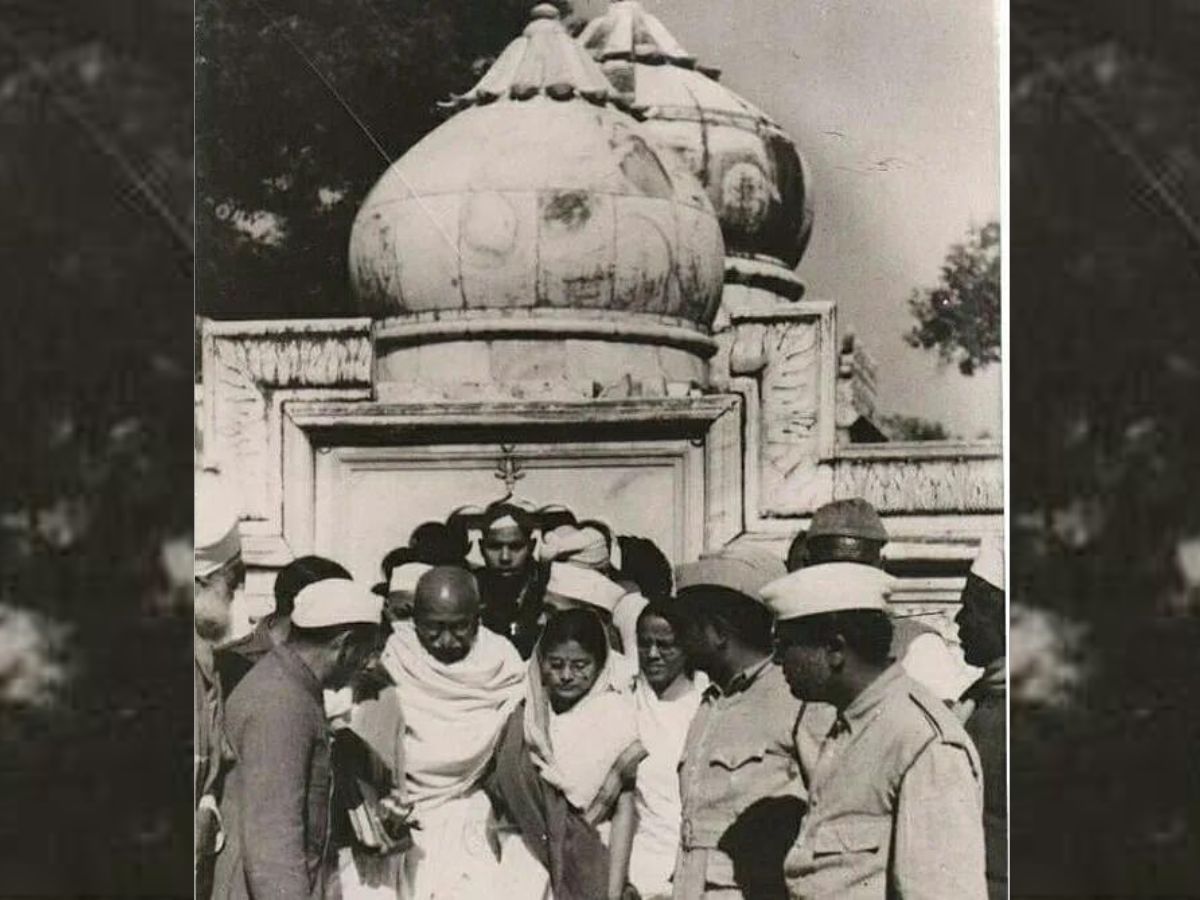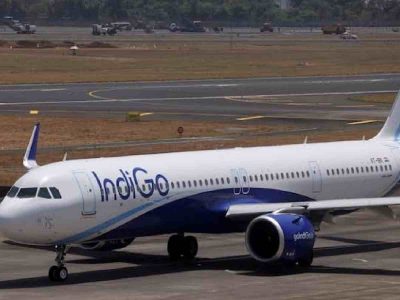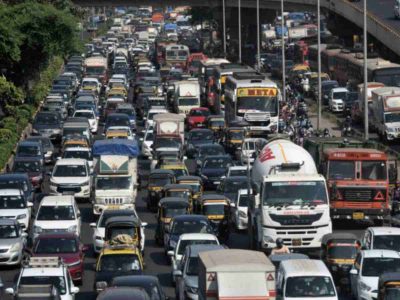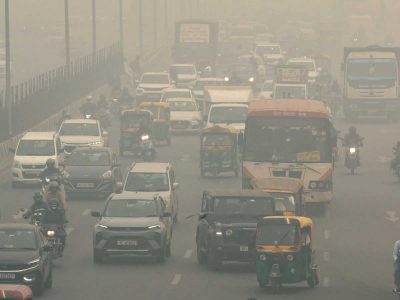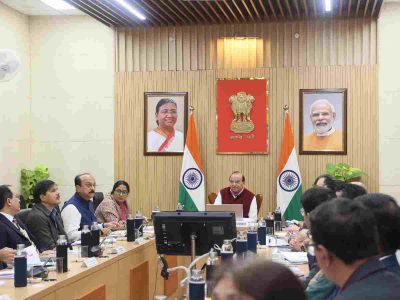Far from the hustle-bustle of the Capital, the Tees January Marg usually wears a deserted look with very light traffic movement disturbing its sedate atmosphere.
But on the cold, wintry January 27 in 1948, that road must have been abuzz with activity as Mahatma Gandhi was preparing for a very important job.
He was back then staying at 5, Birla House on the Tees January Marg (then known as 5, Albuquerque Road), and just nine days after ending his last fast to bring sanity in Delhi which was engulfed in gory communal violence post Partition, he had plans to visit the Qutbuddin Bakhtiyar Kaki Dargah in Mehrauli even though his 79-year-old body had grown weak.
The father of the nation was not visiting the shrine to pay obeisance. The purpose was far more important. This was just three days before his death.
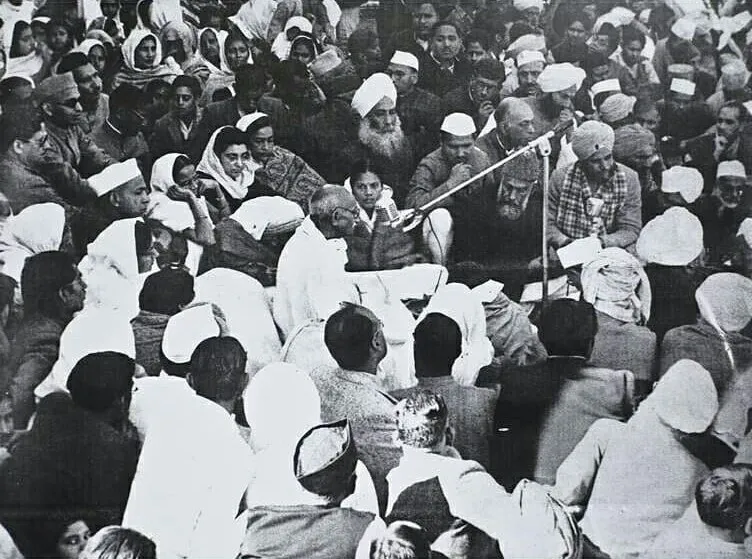
Like now, Delhi was facing extremely cold weather then too but undeterred by the chilly winds, Gandhi left for Mehrauli along with Maulana Azad, Rajkumari Amrit Kaur and others in the morning. Surely, their cars would have moved from Tees January Marg towards the present-day Aurobindo Marg (then Qutub Road). They would have crossed Safdarjung Airport and Yusuf Sarai on way to Mehrauli. INA Colony, Laxmibai Nagar, AIIMS, Green Park and Hauz Khas all came up much later. There was no Ring Road then. It came up only in 1971. In the freezing cold, he reached the Dargah before eight in the morning to see the damage done to it during the communal orgy.
Gandhi was very upset that Muslims were attacked in Delhi in the name of religion. The Dargah was attacked by miscreants when he was fasting.
Even though Urs were being celebrated at the time of his visit, the mood was sombre. After the Dargah was vandalised, many local Muslims left their homes for safer places. Even the staffers of Dargah abandoned it as they feared for their lives. They too moved to safer places.
Those were the days when only villages constituted the Mehrauli area. Writes Pyarelal Nayyar, Gandhiji’s personal secretary, in his book Mahatma Gandhi Purnahuti: “Bapu was devastated to see some part of the Dargah damaged. It was attacked by refugees coming from Pakistan. They were given make-shift accommodation close to the Qutbuddin Bakhtiyar Kaki Dargah by the government”.
The book further states, “After looking at the damaged Dargah, Gandhiji appealed to everybody to live peacefully and shun their differences. He asked Hindu and Sikh refugees to rebuild the damaged area. Gandhiji had asked Prime Minister Jawaharlal Nehru to get the Dargah repaired as it had sustained extensive damage during the riots. Further, Gandhiji asked Nehru to allocate Rs 50,000 for the damages. Of course, it was a huge amount in those days”.
Later, Gandhi wrote, as per his collected works (Volume 98 p.98-99): ‘Esteemed as second only to the shrine at Ajmer, it (the Qutbuddin Bakhtiyar Kaki Dargah) is visited every year not only by Muslims but by thousands of non-Muslims too’.
Before leaving the Dargah, Gandhi is believed to have told the large assembly, “I have come on a pilgrimage. I request, Muslims, Hindus, and Sikhs who have come here with cleansed hearts, to take a vow that they will never allow strife to raise its head, but will live in amity, united as friends and brothers. We must purify ourselves and meet even our opponents with love.”
Rajinder Kumar, a social activist from Mehrauli, whose family has been living in Mehrauli for generations, had learnt about the visit of Gandhi from his father.
“Gandhiji had even asked local Muslims to not leave India for Pakistan. His appeal worked and Mehrauli Muslims changed their mind,” informs Kumar.
In his 744 days of stay in Delhi — April 12, 1915, to January 30, 1948 — Gandhi visited religious places only twice even though he was a devout Hindu. Once when he inaugurated the Birla Mandir on September 22, 1939, on the condition that Dalits would not be barred from entering it. And then when he visited any shrine, it was the Dargah in Mehrauli.
Yes, he had lived in a tiny room at Valmiki Mandir too where he used to teach kids belonging to Valmiki families. The blackboard, used by him during classes, is still there. Gandhi stayed at Valmiki Mandir at the then Reading Road (now Mandir Marg) for exactly 214 days, from April 1, 1946 to June 10, 1947. Louis Fischer used to interview him there before writing his great biography The Life of Mahatma Gandhi.
“This shrine (Dargah of Hazrat Khwaja Qutbuddin Bakhtiyar Kaki) was subjected to the wrath of mobs. The Muslims living in the vicinity… for the last 800 years had to leave… Though Muslims love the shrine, today no Muslim can be found anywhere near it… It is the duty of Hindus, Sikhs, the officials and the Government to open the shrine again and wash off this stain on us… The time has come when both India and Pakistan must unequivocally declare to the majorities in each country that they will not tolerate desecration of religious places, be they small or big. They should also undertake to repair the places damaged during riots,” Gandhi wrote further.
“Dargah Bakhtiyar Kaki comes alive every year during autumn when Phool Walon Ki Sair, the annual Delhi festival that celebrates communal harmony takes place here. It is indeed a tribute to Gandhiji who stood firm [on the belief] that India has to survive on secular ethos,” says Maqsood Ahmad, a teacher and social worker from Delhi-6.
During the festival, both Hindus and Muslims offer floral Chaadar and Pankha at the Dargah while floral pankha and canopy is offered at the ancient temple of Devi Yogmaya, also in Mehrauli.
Sadly, there is no plaque at the Dargah Qutbuddin Bakhtiyar Kaki to suggest this sacred place’s connection with Gandhiji. Can you imagine that those who work at the Dargah have no clue at all as to why Gandhiji came here on January 27, 1948?
“I have no idea about Gandhiji’s visit to this Dargah,” says Majeed, an employee of the Dargah.
As you move out from Dargah to reach the metro station for your return journey, you think of the day when Gandhiji came here.
Sunder Lal Bahuguna, the champion of Chipko movement, once told this writer that Gandhi was unwell after his last fast that ended on January 18, 1948. Yet, he decided to visit the Dargah complex.
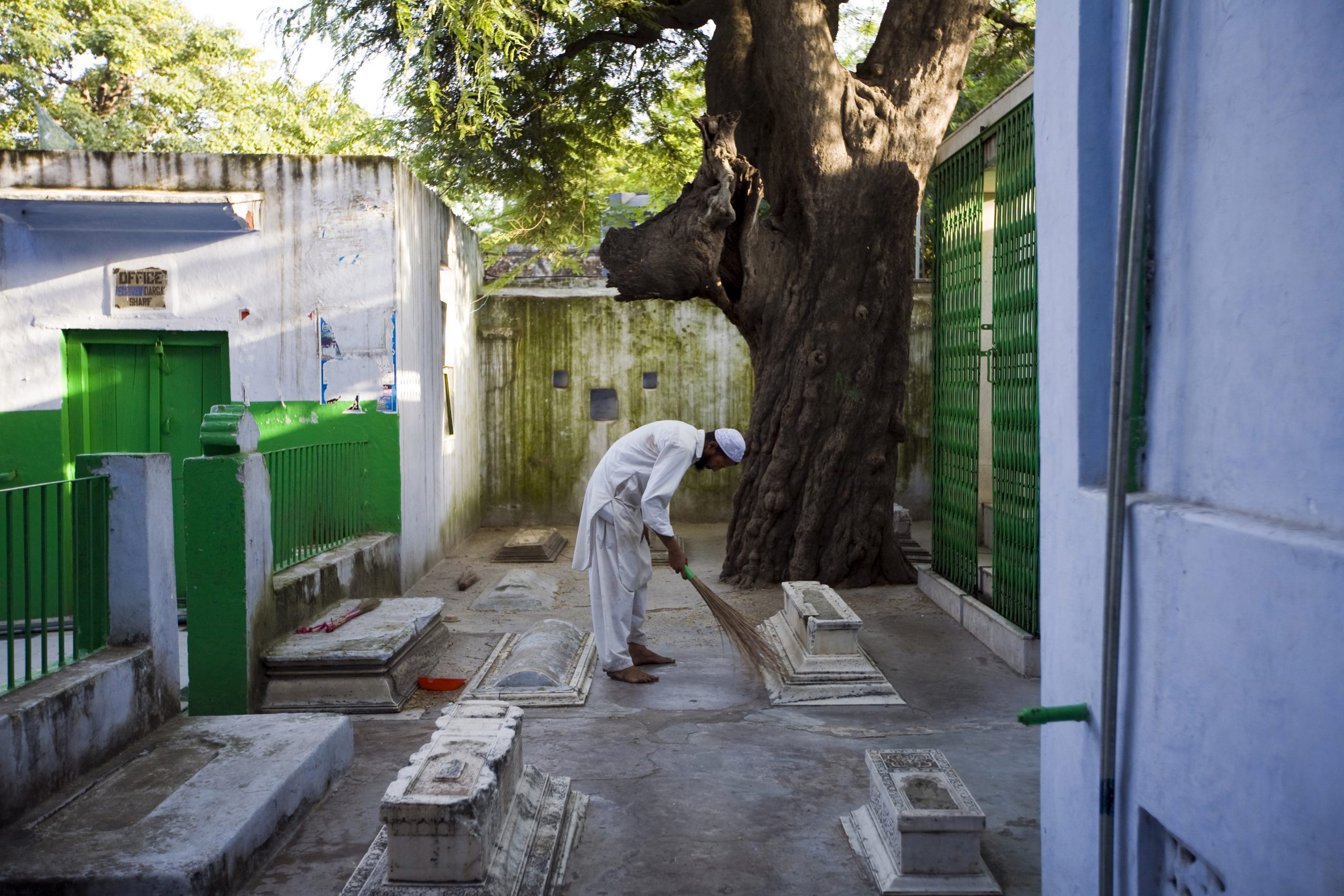
Bahuguna used to attend the all-religion prayers of Gandhi at Birla House daily. He was there even on January 29, 1948 when MS Subbalaxmi sang bhajans there. Unfortunately, he could not attend the prayer on the day Gandhiss fell to senseless bullets as he was busy with some work in Harijan Sevak Sangh.

